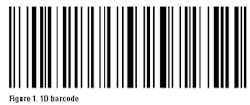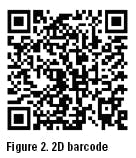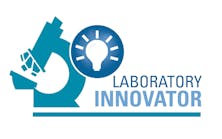Barcodes are such a common part of our daily and professional lives that we rarely even take note of them. The fact is that in their ubiquity, they have revolutionized the identification and tracking of everything from products to patients. But while the existence of barcodes is nothing new, the technology used to read them is experiencing phenomenal enhancements. For comparable enhancements in consumer goods—the latest flat screen TV, for example—you might be better off just waiting for next year’s model. A convincing case can be made, however, that investing in the latest barcode technology today can have immediate paybacks in patient safety and lab workflow improvement.
With that in mind, let’s take a moment and explore barcoding in healthcare today. For close to 20 years, barcodes have been used in healthcare practices for specimen, medication, and patient identification. The classic 1D (one-dimensional) barcode, capable of representing about a dozen characters, has been the norm (Figure 1). While it provides the basic needs of identification, it lacks basic capacity and error detection capabilities required by the federal government’s Meaningful Use standards.
In order to appreciate the latest technological advances, it is important to understand how a 1D barcode actually works. What is critical in reading a 1D barcode is the precision of the black line width and the white line spacing. If these widths are compromised by a misaligned printer or a stretched or faulty label, the classic linear laser 1D barcode reader can’t decode the barcode, or worse, reads an incorrect value. Both outcomes are extremely costly and potentially dangerous.
Another point of failure with classic linear laser readers is the laser itself. The basic premise behind a laser barcode reader is to shoot a red laser light in a sweeping line back and forth in an attempt to accurately measure the width of the black and white lines. You will notice that the specifications for laser barcode scanners regularly document how many thousands of scans per second their scanners are capable of. What that spec is actually stating is that the laser needs to sweep the exact same barcode thousands of times in order to judge the bars’ actual widths. It is a technique that helps overcome variables like movement in your hand or scanning angle. While it was generally accurate in its decoding of 1D barcodes, a laser will never be acceptable for today’s modern 2D high density barcodes (Figure 2).
We have an insatiable appetite for more data. It is no longer acceptable to simply know the ID Number of a product or patient. We now want to know significantly more information about the product’s origin or the patient’s particular needs. Enter the 2D (two-dimensional) barcode. A 2D barcode can store thousands of characters of data with inherently more advanced error detection features in a single barcode. It does not take any knowledge of the precise nature of these 2D symbologies to understand that sophisticated printing and camera technology with enhanced software is required to both produce and capture these amazingly dense barcodes. Compounding the complexity of 2D barcodes is the ever-increasing demand to apply them to smaller and smaller objects. It has required significant technological enhancements to reach this point.
The technological answer to reading these micro-sized, ultra-dense barcodes is a high definition digital camera. Without diving into a master’s class about the digital sensor technology used in today’s digital photography equipment, suffice it to say that an extremely accurate picture of even the smallest barcode is well within reach with today’s technology. What is less common is enhanced software algorithms that precisely decode the picture once it is captured.
Many of us have been amazed at the picture quality of the cameras in our cell phones, or in their uncanny ability to autofocus. It is the software in the cell phone camera that detects whether the person in the picture blinked.
Leading developers of barcode scanners for healthcare have developed custom photo sensors with highly precise optical lenses that are specifically optimized for reading what many would agree are the most challenging barcodes to read. This new class of scanners is called area imagers because they are not only fully capable of capturing an accurate picture of the barcode but also have the ability to capture the “area” around the barcode in the photo as well. This feature is used commonly in the package delivery industry to support reading multiple barcode symbols with a single read. Applications within healthcare are just now emerging for the enhanced features of area imagers.
Another advantage of the area imager over the laser scanner has to do with speed of capturing the barcode. Because area imagers are taking a picture, it is not necessary to line the barcode up as you would with a laser reader. Imagers take the picture of the barcode from any angle, and the software finds the barcode and decodes it almost instantly. The red line on a laser scanner, as you know, must be lined up to exactly match the 1D set of bars in order to complete the read. That simple twisting of the wrist is both a big time-waster and literally a “pain in the wrist.”
The latest breakthrough in healthcare barcode area imagers is the addition of highly accurate color sensors. These color digital camera sensors, in combination with the aforementioned barcode decoding software, have created a platform for healthcare data capture application never before considered. For example, what if the barcode scanner were capable not only of reading the barcode label on the tube but of communicating the cap color as well? How many errors in specimen collection would be avoided? During the administration of meds, what if the barcode scanner could be used not only to read the medication’s barcode label but also to photo identify the medication as an instant cross check? How many pharmacy errors could be avoided? The possibilities for new uses of color are limited only by clinicians’ and the healthcare software vendors’ imaginations. It’s a good best practice to future-proof your next barcode reading investment with color area imagers, so you are not reinvesting prematurely.
If you are considering refreshing your laboratory barcode solution, I would highly recommend that you invest in 2D area imagers. They will have you on track for today’s Meaningful Use certification and the new standards that are coming in the very near future.
Doug Brown is Healthcare Marketing Manager for Honeywell Scanning and Mobility. He works with leading EHR and laboratory software companies and lab professionals to help bring practical and effective barcode and mobile computers to the task of data collection in the lab and hospital.







